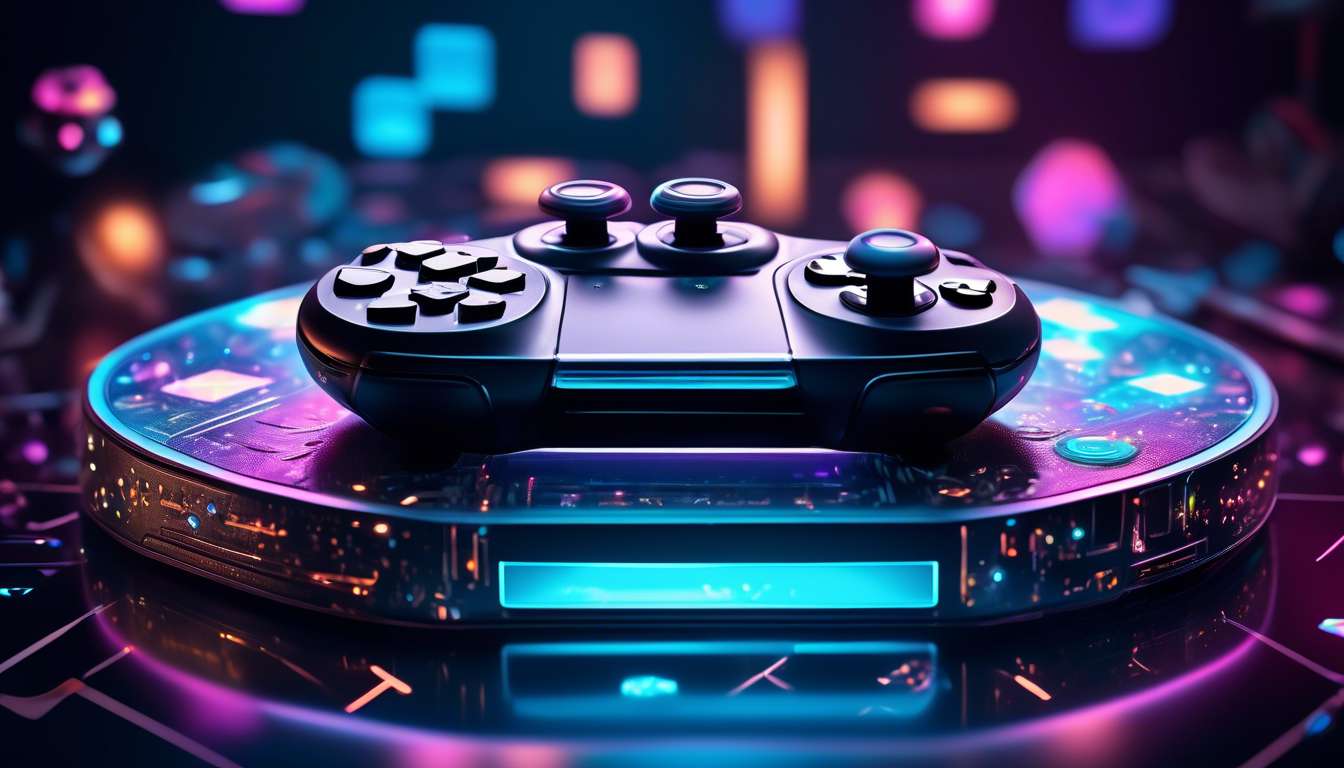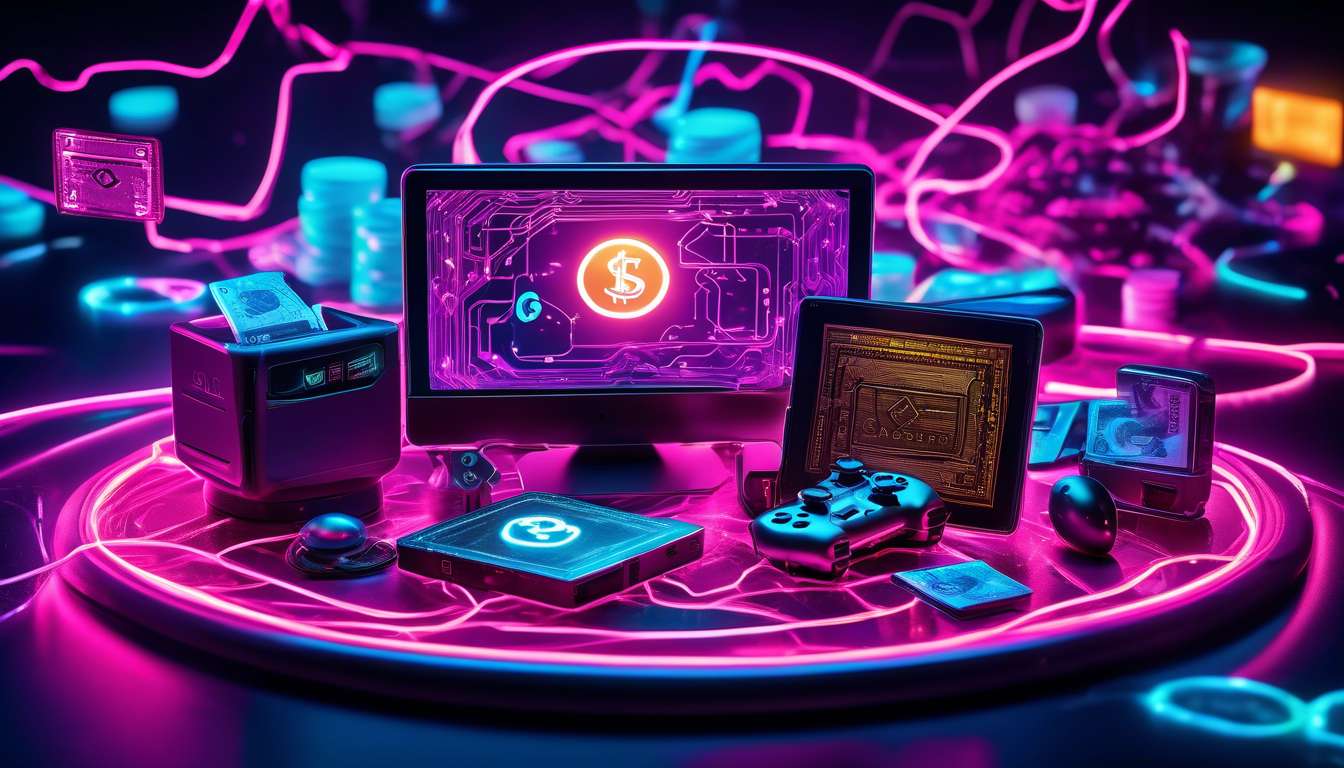In the ever-evolving world of gaming, navigating the maze of gaming platform licenses can be daunting. As gamers and developers, we find ourselves on a constant quest for clarity, seeking to understand the legal frameworks that govern our favorite platforms.
Our journey through virtual landscapes is not just about gameplay; it’s about ensuring that our creations and experiences align with the legal standards set by the platforms we cherish. Together, we explore the intricacies of licensing agreements, deciphering terms that dictate:
- Usage rights
- Revenue sharing
- Content ownership
By demystifying these complex documents, we empower ourselves to make informed decisions that protect our interests and foster innovation.
This guide is our collective attempt to break down the barriers of legal jargon, transforming them into accessible insights. Join us as we delve into the essential aspects of gaming platform licenses, ensuring that we all play by the rules while maximizing our creative potential.
Licensing Agreements Overview
Licensing agreements form the backbone of any gaming platform, dictating how developers, publishers, and users can interact with the software. When we dive into these agreements, we find they’re crucial for understanding content ownership.
These agreements clarify:
- Who holds the rights to the games we love
- Ensure all parties comply with the established terms
This builds a sense of community and trust, as everyone knows what they can and cannot do.
By adhering to these agreements, we help maintain a fair and vibrant gaming ecosystem. They protect:
- Developers’ creative work
- Provide publishers the tools they need to distribute games effectively
For us, the users, these agreements ensure we have access to high-quality content while respecting the creators’ rights.
In this shared space, compliance is our collective responsibility. Staying informed and understanding these licensing agreements is key to fostering a thriving gaming environment where everyone feels they belong and can contribute.
Types of Usage Rights
When exploring usage rights in gaming, we encounter various types that define how we can interact with gaming content. These rights are often outlined in licensing agreements, which serve as our roadmap to understanding what we can and can’t do with the games we love.
Let’s dive into the different types of usage rights that bring us closer to our gaming communities.
Content Ownership
- Typically stays with the creator or publisher.
- Users usually receive a limited license to use the game.
- Users cannot claim the game as their own or modify it without permission.
This ensures that the original creators’ rights are respected while allowing us to enjoy their creations.
Compliance with Agreements
Adhering to these agreements is crucial for maintaining our standing in the gaming community. By following the terms, we:
- Show respect for the creators.
- Contribute to a positive, inclusive gaming environment.
Understanding these usage rights fosters a sense of belonging, as we all navigate the gaming world together.
Revenue Sharing Models
In today’s gaming industry, revenue sharing models play a pivotal role in how profits are distributed between developers, publishers, and platforms. These models ensure fair compensation for all parties involved, fostering a sense of community and partnership among stakeholders who share a passion for innovation and creativity.
Licensing agreements are essential in outlining these revenue sharing models. They are not just about numbers but about fostering collaboration. Key aspects include:
- Compliance with platform guidelines
- Respect for intellectual property rights
- Creation of a balanced ecosystem
These agreements help ensure that each contributor feels valued and included.
Content ownership and compliance are critical to maintaining alignment with platform guidelines. This compliance fosters trust and collaboration, which is vital for a thriving industry. It ensures that:
- Everyone respects intellectual property rights
- The ecosystem remains balanced
- Contributors feel valued and included
Revenue sharing models can vary significantly, but the core principle remains the same: to distribute earnings in a manner that reflects each party’s contribution and investment. By adhering to these models, we strengthen our industry and build lasting connections, united by our shared interests and ambitions.
Understanding Content Ownership
In the realm of gaming platforms, understanding content rights is crucial for maintaining a fair and collaborative environment. As gamers and creators, feeling secure about our contributions and creations is essential.
Licensing agreements are the backbone of this security, as they clearly define content ownership and ensure everyone knows their rights. These agreements specify who owns what, whether it’s:
- The game developers
- The platform
- Community members creating mods or additional content
Being proactive in understanding these licensing agreements is important to ensure our contributions remain ours, or to acknowledge when they belong to someone else.
Compliance with these agreements when engaging with gaming platforms fosters trust and respect within our community. By staying informed about content ownership, we contribute to a space where:
- Creativity flourishes
- Everyone’s hard work is recognized
This understanding not only protects us legally but also strengthens our shared connection within the gaming community.
Compliance and Enforcement Measures
To ensure everyone adheres to licensing agreements, gaming platforms implement various compliance and enforcement measures. As a community, we understand how crucial it is to respect these guidelines to maintain harmony and trust among developers, players, and platform providers. Compliance ensures that all parties honor content ownership rights and adhere to agreed-upon terms.
Platforms employ automated monitoring systems to detect unauthorized use of content, ensuring compliance with licensing agreements. These systems help maintain a level playing field where creators’ intellectual property is protected, and users can enjoy authentic, licensed content. When violations occur, platforms often take swift action, which might include:
- Removing non-compliant content
- Suspending accounts
By actively engaging in these measures, we’re not just protecting content ownership but also cultivating a respectful environment where creativity and innovation can thrive. Together, we reinforce a community that values fairness and integrity, making our shared gaming experiences more enjoyable and sustainable for everyone involved.
Implications on Game Development
Game development is profoundly influenced by licensing requirements, shaping how we create, distribute, and monetize our projects. Within our community, understanding licensing agreements is crucial as they dictate how we can use assets, tools, and platforms.
Licensing Agreements:
- Define the boundaries of content ownership, ensuring our creativity is protected while respecting the original creators’ rights.
- Require compliance to avoid potential legal issues that could hinder our progress and impact our reputation.
Distribution Impact:
Licensing agreements also play a significant role in determining how we can distribute our games across various platforms.
- Compliance ensures that we can reach our audience without unnecessary obstacles.
- Adhering to these requirements fosters a sense of belonging within the gaming community.
By adhering to these requirements, we not only safeguard our projects but also contribute to a fair and respectful ecosystem.
Developer Responsibilities:
As developers, our ability to navigate these agreements effectively is key to thriving and building meaningful connections in the gaming industry.
- Understanding and complying with licensing agreements protect our work and reputation.
- Effective navigation of these agreements is essential for establishing and maintaining industry connections.
Navigating Platform Restrictions
Navigating platform restrictions requires us to thoroughly understand and adapt to each platform’s unique rules and limitations to ensure our game’s success.
We’ve all faced the challenge of deciphering complex licensing agreements, but embracing this process is essential. By doing so, we not only safeguard our content ownership but also foster a sense of belonging within a community that values compliance and creativity.
As developers, it’s crucial that we stay informed about the specific restrictions each platform imposes. Whether it’s adhering to content guidelines or understanding data use policies, compliance is key.
To effectively manage these challenges, we must:
- Continuously engage with the rules.
- Prevent any potential setbacks that could jeopardize our projects.
By working together and sharing insights, we can help each other navigate these complexities more effectively. Let’s remember that our collective efforts in understanding these restrictions not only protect our creative endeavors but also contribute to a thriving, compliant gaming ecosystem where we all feel we belong.
Maximizing Creative Potential
To maximize our creative potential, we need to leverage platform-specific features and tools to innovate and push boundaries in game development.
By understanding licensing agreements, we can ensure we’re using these features to their full extent while maintaining compliance. These agreements often outline the unique capabilities of each platform, giving us the framework we need to create something truly special.
Content ownership is another key aspect we must consider. By carefully navigating these agreements, we can:
- Protect our creative assets
- Ensure that our hard work remains ours
This not only fosters a sense of security but also strengthens our community, allowing us to collaborate and share our creations with confidence.
By adhering to compliance guidelines, we can avoid potential roadblocks and focus on what truly matters: creating games that reflect our shared passion and creativity.
Together, we can build a vibrant gaming world where every member feels valued and inspired to contribute their unique ideas.
What are the typical costs associated with obtaining a gaming platform license?
When considering the typical costs associated with obtaining a gaming platform license, it’s important to account for several key expenses.
1. Application Fees
- These are initial costs required to submit your license application.
2. Renewal Fees
- These are recurring costs to maintain the validity of your license over time.
3. Additional Compliance Costs
- These might include costs for audits, legal consultations, and other regulatory requirements.
These expenses can vary depending on:
- Jurisdiction
- Type of license required
Budgeting Tips:
- Research Jurisdictions: Understand the specific requirements and costs of the jurisdiction where you plan to operate.
- Plan for Recurring Costs: Factor in renewal and compliance costs into your long-term financial planning.
- Consult with Experts: Engage with legal and financial advisors who specialize in gaming licenses to ensure all costs are considered.
Conclusion:
It’s crucial to budget carefully and factor in these costs to ensure a smooth licensing process and ongoing compliance with regulations.
How do gaming platform licenses impact cross-platform game development?
Cross-Platform Game Development
When developing games for multiple platforms, gaming platform licenses are essential. They ensure both compatibility and compliance across different systems. These licenses influence several aspects of game development:
- How games are distributed.
- How games are accessed.
Impact on Game Design and Optimization
Understanding these licenses is crucial for developers because they affect:
- The design of games.
- The optimization process for multiple platforms.
Benefits of Adhering to Licensing Guidelines
By adhering to the guidelines set by these licenses, developers can:
- Create seamless experiences for players on various devices.
- Enhance the overall gaming ecosystem.
In summary, being mindful of gaming platform licenses is vital for a successful cross-platform game development strategy.
What role do third-party software and tools play in gaming platform licensing?
Third-party software and tools play a crucial role in gaming platform licensing. They often provide developers with the necessary resources to enhance their games and meet platform requirements.
By leveraging these external resources, we can optimize our development process and create high-quality experiences for players across different platforms.
Benefits of integrating third-party solutions:
- Help us stay competitive
- Deliver innovative gameplay features
- Keep our audience engaged
By utilizing these tools, developers can focus on creating engaging content while ensuring the games meet industry standards.
Conclusion
In conclusion, understanding gaming platform licenses is crucial for developers.
By grasping the nuances of licensing agreements, usage rights, revenue sharing, and content ownership, you can navigate potential pitfalls and maximize your creative potential.
Key Points to Consider:
-
Licensing Agreements
- Understand the terms and conditions.
- Know the duration and scope of the license.
-
Usage Rights
- Clarify what you can and cannot do with the platform.
-
Revenue Sharing
- Be aware of how revenue is split between you and the platform.
-
Content Ownership
- Determine who retains the rights to the content created.
Stay informed about compliance measures and platform restrictions to ensure smooth game development.
Remember, knowing the ins and outs of licenses empowers you to make strategic decisions that benefit your gaming projects in the long run.




